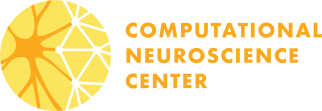Graduate Courses
Neurobiology and Behavior graduate courses:
- NEUBEH 501: Introduction to Neurobiology: Molecular & Cellular Neurobiology. (3) Concepts and techniques of molecular and cell biology as applied to understanding development and function of the nervous system.
- NEUBEH 502: Introduction to Neurobiology: Sensory & Motor Systems. (5) Introduction to neuroanatomy and modules on sensory and motor systems, examination of macroscopic and microscopic neural tissues.
- NEUBEH 503: Cognitive and Integrative Neuroscience (4) A discussion of higher neural processes like learning, memory, and neuroendocrinology. Lecture and laboratory discussion of original literature, observation of demonstrations and simulations.
- NEUBEH 504: Biophysics of Nerve, Muscle, and Synapse (3) Introduces biophysical properties of nerve and muscle cells. Topics include intrinsic electrical properties of neurons, ion channels, receptor signaling, calcium signaling, contraction of muscles, and synaptic function.
Core Computational Neuroscience sequence:
- NEUBEH 532: Discussion in Cell Signaling. This required Neurobiology and Behavior course introduces students, through readings of primary literature, to development of models in neuroscience at a range of levels, from ion channels to high-level vision.
- AMATH 422/522: Computational Modeling of Biological Systems This course trains students without a computational background to formulate a mathematical model of a biological process and to implement it computationally.
- NEUBEH/PBIO 545: Quantitative Methods in Neuroscience This course, details given above, is a key element of our computational neuroscience program for two groups of students: those with a relatively strong mathematical or computational background who are new to neuroscience, and neuroscience students whose mathematical background needs strengthening.
- NEUBEH 528: Computational Neuroscience This course covers the fundamentals of contemporary computational neuroscience as covered in the textbook Theoretical Neuroscience, by Dayan and Abbott, and has a strong grounding in systems neurobiology and data analysis.
- AMATH/CSE 533: Neural Control of Movement This class provides a comprehensive view of how the brain controls movement. It brings together elements of biomechanics and muscle physiology, neuroanatomy and neurophysiology of the motor system, sensorimotor psychophysics and kinesiology, and movement disorders. Empirical data are interpreted in the context of control-theoretic models whenever possible.
- AMATH 534: Dynamics of Neurons and Networks This course teaches mathematical analysis and simulation of neural systems — single cells, networks and populations – via tools of dynamical systems, stochastic processes, and signal processing. Topics include single-neuron excitability and oscillations, network structure and synchrony, and stochastic and statistical dynamics of large cell populations.

